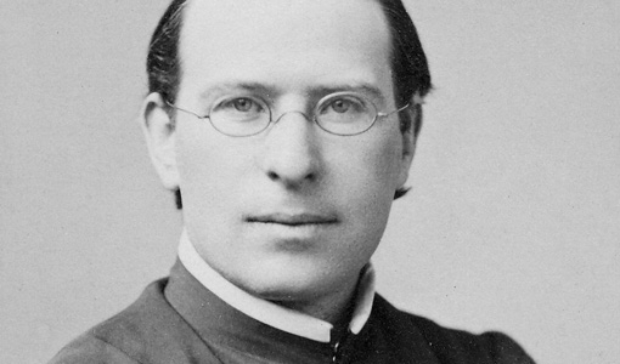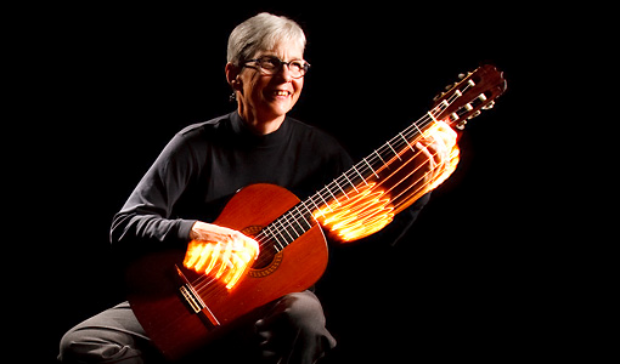Near the close of the year 1853, the first bishop of St. Paul, Joseph Cretin, took a look at the records of students in his select Latin School, housed on the upper floor of his cathedral. Cretin was always on the look out for priestly vocations, sorely needed for the future of a Catholic Church growing rapidly on the western frontier.
Two boys stood out – John Ireland, 15, and Thomas O’Gorman, 10. He summoned the two, and after confirming their interest in the priesthood, he led them to the chapel. Following a prayer before the altar of the Virgin Mary, he took the hands of the two schoolboys in his own and placed them on the altar with these words, “I put you under the protection of God and His Blessed Mother; you are the beginning of my diocesan seminary, the first seminarians of St. Paul.”
This dedication continued what was destined to be a 66-year friendship between sons of Irish immigrants, a friendship that would lead both to the episcopate and to influential roles in the history of American Catholicism.
The bond between John Ireland and Thomas O’Gorman was born of one of those chance events that influences history. Their fathers were childhood friends in Ireland who just happened to meet on a Chicago street after having not seen one another in 18 years. Soon after this happenstance, the two families decided to cast their lot further west and traveled together by prairie schooner to St. Paul, arriving in 1852.
Bishop Cretin, having no seminary of his own, sent his two recruits to France, where he himself had studied for the priesthood. Under the watchful eye of his sister, Mlle. Clemence Cretin, who served as a surrogate mother, Ireland and O’Gorman successfully completed minor and major seminary studies and returned separately to be ordained in St. Paul – Ireland in 1861, O’Gorman four years later.
"He had something about him that invited and inspired confidence."
O'Gorman's first priestly assignment was to Rochester, a churchless parish with four missions. It was here that he received his first experience as a frontier priest, celebrating the Eucharist in farmers’ sod huts and gaining an understanding of the joys and pains of enabling an immigrant church to take root in a new land. And it also was here that he first exhibited the talents that would take him far.
He built Rochester’s first church, an impressive feat for a 29-year-old pastor, and set about forming schools and Catholic societies to glue the community together. He advocated total abstinence, a cause he had in common with Ireland, and quickly developed a reputation as an inspiring orator. A eulogist at O’Gorman’s funeral, who was a young witness to his work in Rochester, put it simply, “He had something about him that invited and inspired confidence.”
His Rochester pastorate came to an end in 1878, when the young priest joined the Paulist order and served as a missionary to non-Catholics in New York, New England, Milwaukee and Chicago. He was deeply influenced by the society’s emphasis on the compatibility of democratic and Catholic values, as well as its concern with social needs. His evangelistic preaching, including Lenten sermons in St. Patrick’s Cathedral in New York City, brought him to the attention of influential prelates. He resigned from the Paulists in 1882 and, at the bidding of now-Bishop Ireland, resumed pastoral duties in Minnesota, this time in Faribault.
His long friendship with Ireland made him an unsurprising choice as the first rector of Ireland’s long-sought seminary. So it was O’Gorman, five other faculty priests and 62 students, divided between seminary and collegiate programs, who gathered in September 1885 to dedicate St. Thomas Aquinas Seminary, the precursor of the College of St. Thomas. “There being no books, no desks, very little was possible,” was O’Gorman’s candid diary description of opening day.
The one-building institution was an educational omnibus typical of the day, containing a theological seminary, a minor seminary, a junior college, a high school and a junior high school. It was advertised not only as a preparation for the priesthood but also as an educational foundation (in its classical program) for secular careers, such as law or medicine.
O’Gorman was confronted with 19th century multitasking – priest, college president, dean of studies, superintendent of grounds and buildings, disciplinarian and professor. He resigned after two years, and perhaps the best evaluation of his brief tenure was by historian of St. Thomas Joseph Connors, who wrote, “The public tributes to Father O’Gorman both during and after his term as rector are evidence that he met the demands of that office with the same thoroughness and conscientiousness he had shown as pastor. It is clear, nonetheless, that it was not an assignment he relished, or for which either he or the bishop thought he was well suited.” After stepping down as rector, he stayed on for three years to teach dogmatic theology, English literature and French.
It was after his appointment as professor of ecclesiastical history at the Catholic University of America in 1890 that O’Gorman became involved in the major issues enveloping the Catholic Church in the United States.
One issue that divided Catholic clergy was the extent to which assimilation of Catholic immigrants should be encouraged. Should they be weaned quickly from the customs, language and institutions of their native lands – i.e., become “Americanized” – or should their national heritages be cultivated as they transitioned slowly into a basically Protestant culture? Should parochial schools have a claim on government support, given the secular nature of the public schools and the rights of parents? Should the church condemn certain benevolent and fraternal “secret” societies found in American society, or would this only heighten the sense that Catholicism is a “foreign” religion?
Perhaps the most sensitive issue was internal: the relationship of the papacy to the American hierarchy as impacted by the desire of the Holy See to establish an apostolic delegation to mediate disputes between the Vatican and the Catholic Church in America.
So adept was O’Gorman in negotiating these shoal waters that in 1895 Pope Leo XIII had him prepare the first draft of his encyclical on Catholicism in America. The end product reflected the drafter’s moderate liberal views, except for some instances where the Pope obviously had the last word, such as the document’s assertion that Catholicism as a state church was always preferable to separation of church and state. One commentator noted, “O’Gorman’s birth in America, his rearing in the more tolerant Midwest, his liberal teachers in France and his experience with the Paulist Fathers all contributed to his progressive outlook.”
He was a thorough-going American citizen in every way, his influence was always for the better things in life, in and outside his communion.
The last years of O’Gorman’s life were spent as bishop of Sioux Falls, S.D., a position to which he was appointed, with Ireland’s help, in 1896. Many expected him to rise in ecclesiastic circles on the more influential East Coast and considered a form of exile what O’Gorman himself referred to as “the Wild Wooley (sic) West.”
Yet he continued to have national influence as the result of contacts he made earlier, including Theodore Roosevelt, then Civil Service Commissioner, and PresidentWilliam McKinley. (In a rare disappointment, he failed to convince McKinley to intercede with the Pope to get his lifelong friend John Ireland a red hat.)
O’Gorman traveled extensively – inside and outside the state – with occasional misadventures. He was robbed of $800 in robes and jewelry in lawless Lead, S.D., and his Naples-bound ship was stopped and relieved of contraband copper by an English torpedo vessel during World War I.
O’Gorman and his young diocese prospered together. Applying lessons learned back in Rochester, the new bishop brought administrative order to a sprawling jurisdiction (which would later be divided); built parishes, schools, hospitals and even one (eventually defunct) college; revealed a populist empathy with the victims of natural disasters, such as floods and tornadoes, as well as of manmade ones, such as financial panics; and earned the love and respect of his priests and lay flock. “He ruled with a big heart” is the way one contemporary put it.
The bishop preached adaptation to American culture and, in a predominately non Catholic area, cooperated with Protestants in common endeavors, such as ridding the state of its quickie-divorce status. He kept alive his interest in history, which had culminated in his 1895 book, A History of the Roman Catholic Church in the United States, and enhanced his reputation as a master of both the pulpit and the after-dinner lectern.
Ireland died in 1918, and his personal papers were given to O’Gorman to write the biography. He never got to it. Three years later at the age of 78 and in his 26th year as ordinary of Sioux Falls, Bishop Thomas O’Gorman died. Of all the eulogies, the local newspaper perhaps summed it up best: “He was a thorough-going American citizen in every way, his influence was always for the better things in life, in and outside his communion.”
The author would like to acknowledge the support and assistance of the Thomas James O'Gorman family in researching the article.





